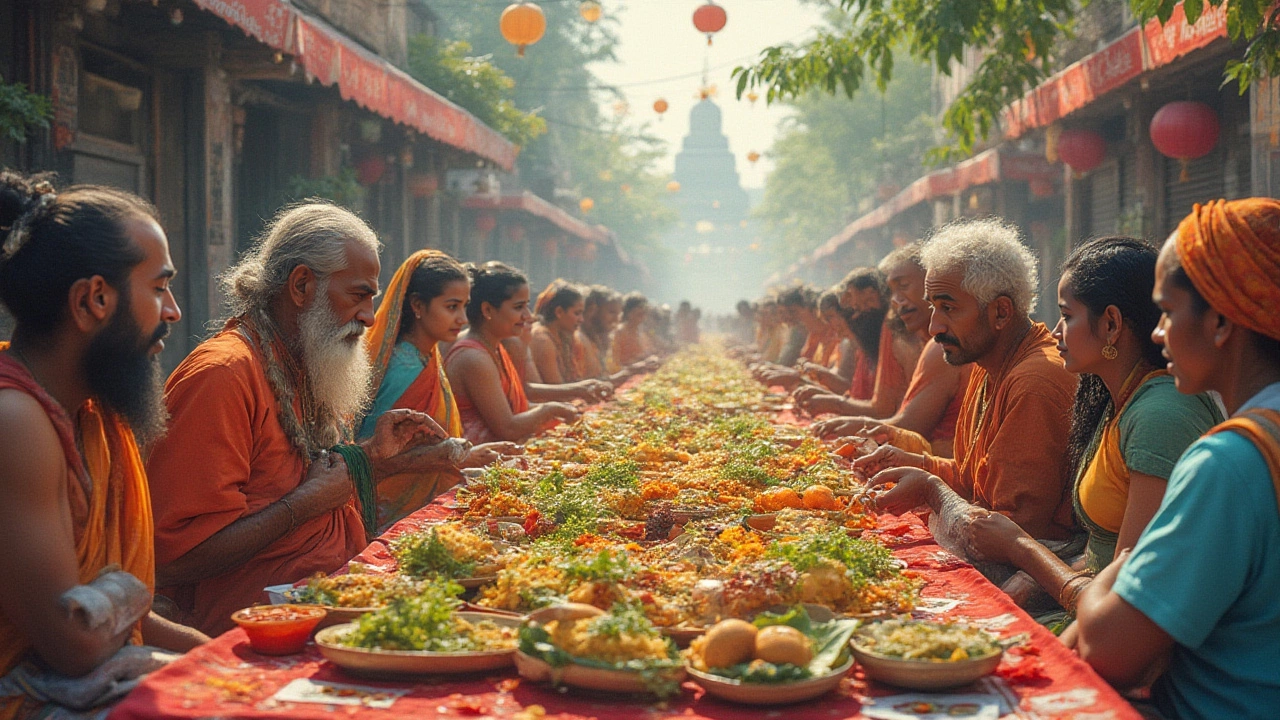Vegetarian Religion – Faith and Food in India
Ever wonder why a big chunk of India eats mostly veggies? It’s not just taste – it’s religion. From Hindu temples to Jain monasteries, spiritual ideas tell people what’s okay on the plate and what’s not. In this guide we’ll break down the most common beliefs, point out the tasty side‑effects, and give you quick tips if you want to cook respecting those traditions.
Why Many Indians Choose Vegetarian Meals
Hinduism, the biggest faith in India, often promotes a meat‑free diet because of the principle of ahimsa – non‑violence. The idea is simple: hurting animals makes it harder to stay pure inside. That’s why you’ll see a lot of lentils, paneer, and fresh vegetables in everyday meals.
Jainism goes even further. Jains avoid any living creature, even tiny insects, so they skip root vegetables like onions and potatoes that might kill tiny bugs in the soil. Their meals are light, clean, and full of grains, beans, and seasonal greens.
Even in Islam, certain foods are off‑limits. While Muslims do eat meat, they avoid pork for religious reasons. That’s why you’ll often find halal‑friendly veggie dishes in Muslim households, especially during Ramadan when many prefer lighter fare.
Christian communities in South India also have vegetarian traditions, especially during fasting periods like Lent. The result? A rich variety of coconut‑based curries, tamarind‑spiced dals, and sweet treats that stay meat‑free.
Religious Rules that Guide What We Eat
Each faith has its own list of dos and don’ts. For Hindus, beef is a major no‑no because the cow is sacred. Many also steer clear of meat on Tuesdays and Fridays, opting for a simple sabzi or a bowl of rice.
Jains avoid all meat, fish, eggs, and even honey. They also skip onions, garlic, and some spices that are believed to raise passion. If you’re cooking for a Jain guest, stick to plain oil, turmeric, cumin, and fresh veggies.
Muslim dietary rules focus on halal preparation and the ban on pork. If you’re serving a Muslim audience, make sure any meat is slaughtered according to halal standards, or keep the dish vegetarian to stay safe.
When you know the basic rules, you can mix and match flavors without breaking any taboos. Use coconut milk for creaminess instead of dairy, add curry leaves for aroma, and finish with a squeeze of lime for brightness.
Practical tip: keep a small pantry of vegetarian staples – lentils, rice, millet, and a mix of spices like cumin, coriander, and mustard seeds. These work for almost any religious kitchen and let you whip up a quick dal, a fluffy idli, or a comforting rasam in minutes.
Understanding the why behind vegetarian choices helps you respect traditions and also expands your cooking toolbox. Next time you sit down to a plate of curd rice or a hot bowl of sambar, you’ll know the faith that shaped that flavor.
Religions That Eat the Least Meat: Vegetarianism and Spiritual Beliefs Worldwide
Explore which religions avoid meat the most, with real-life examples, practical tips, and fascinating facts about faith-based plant-based diets.
